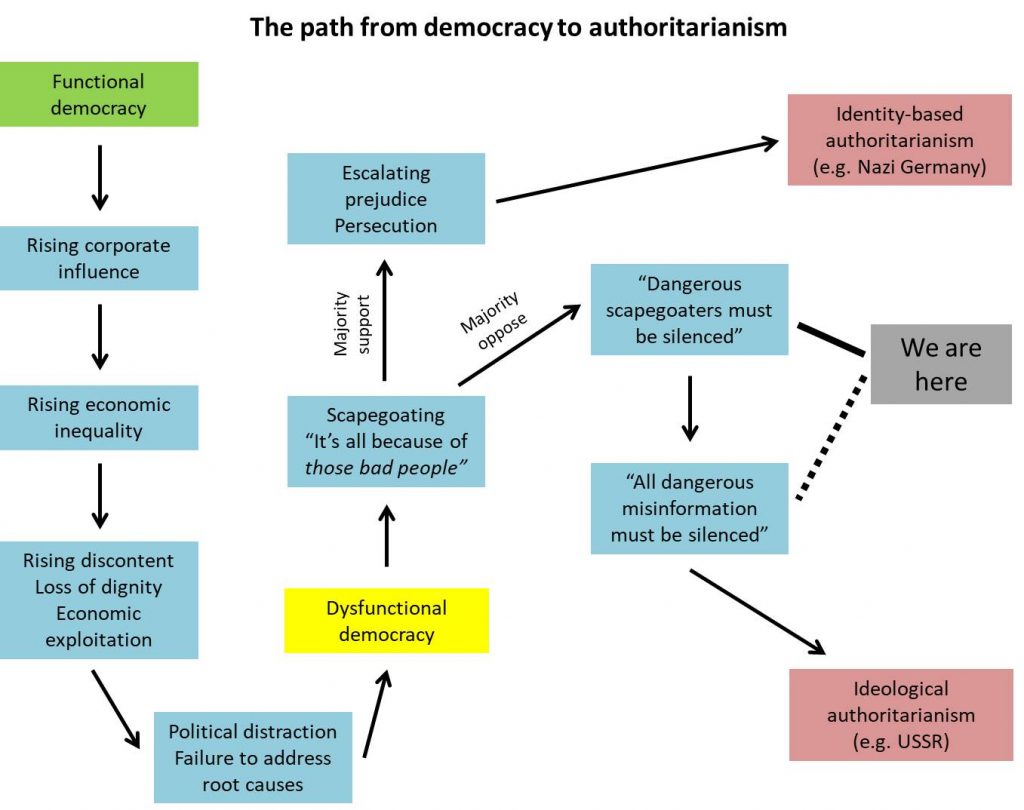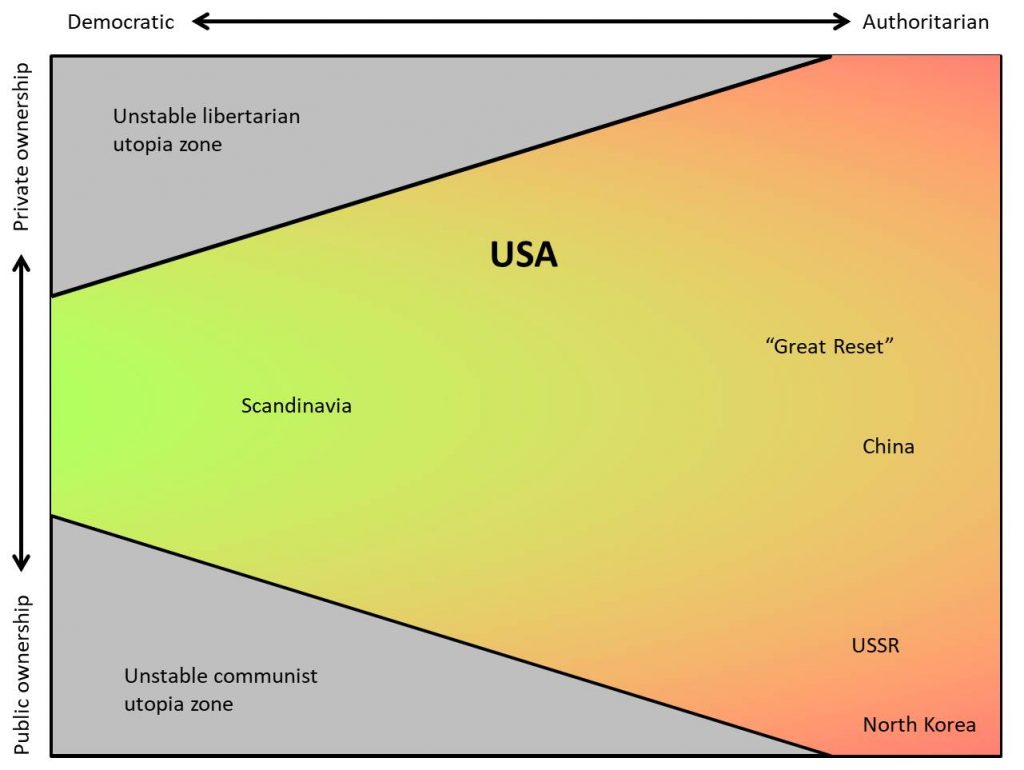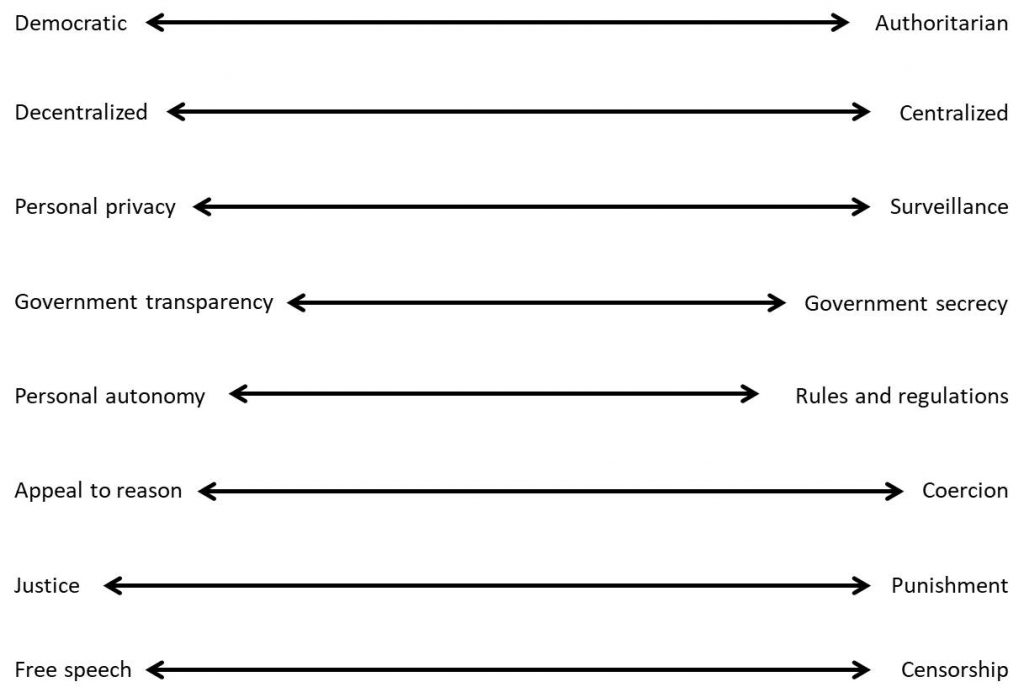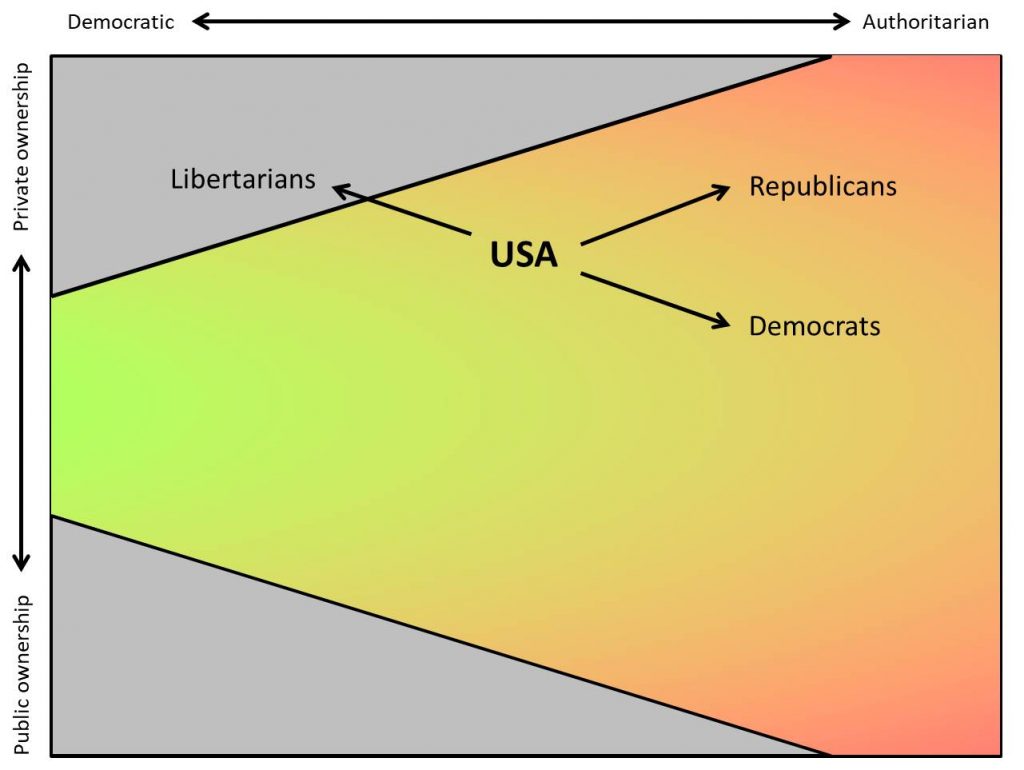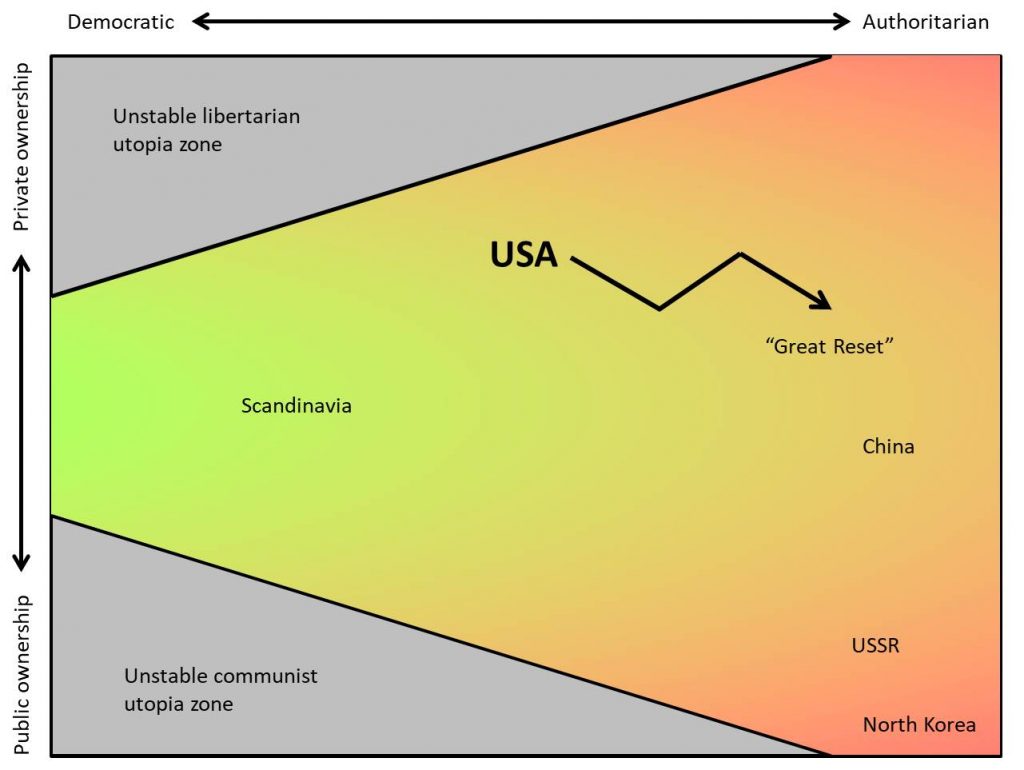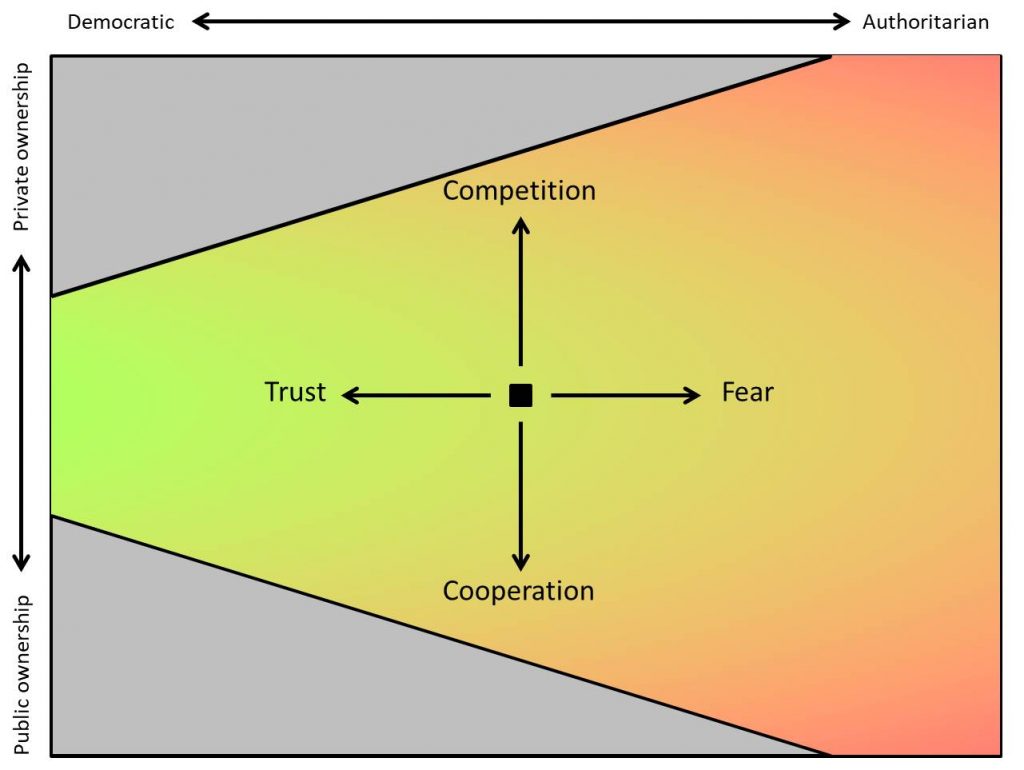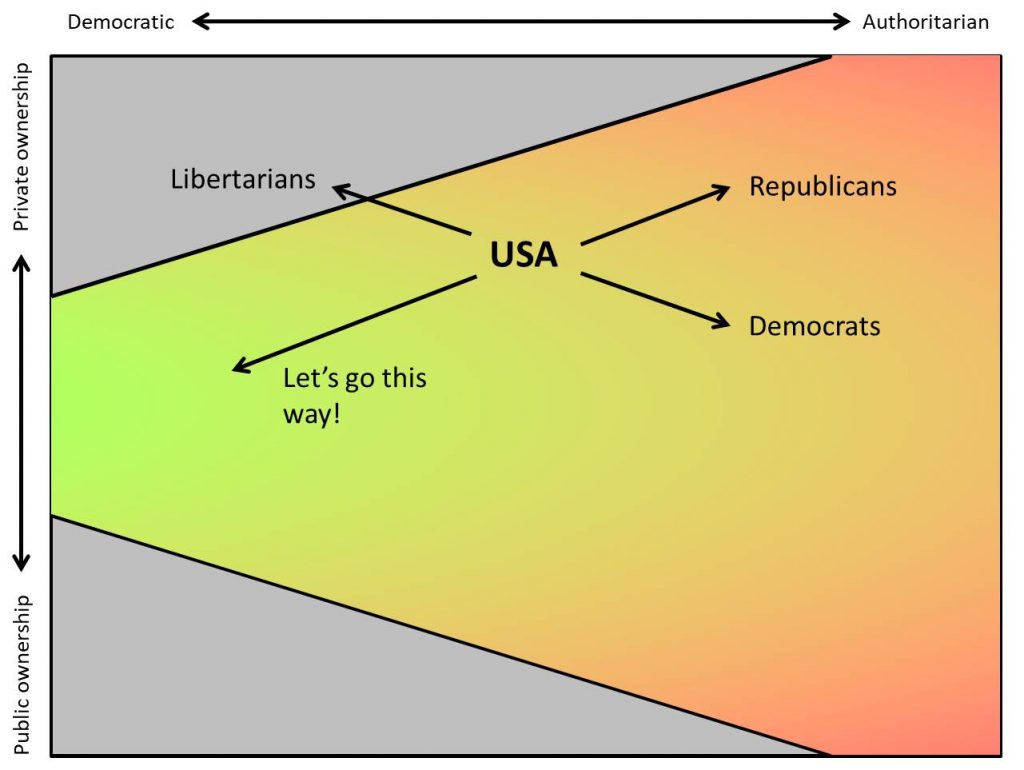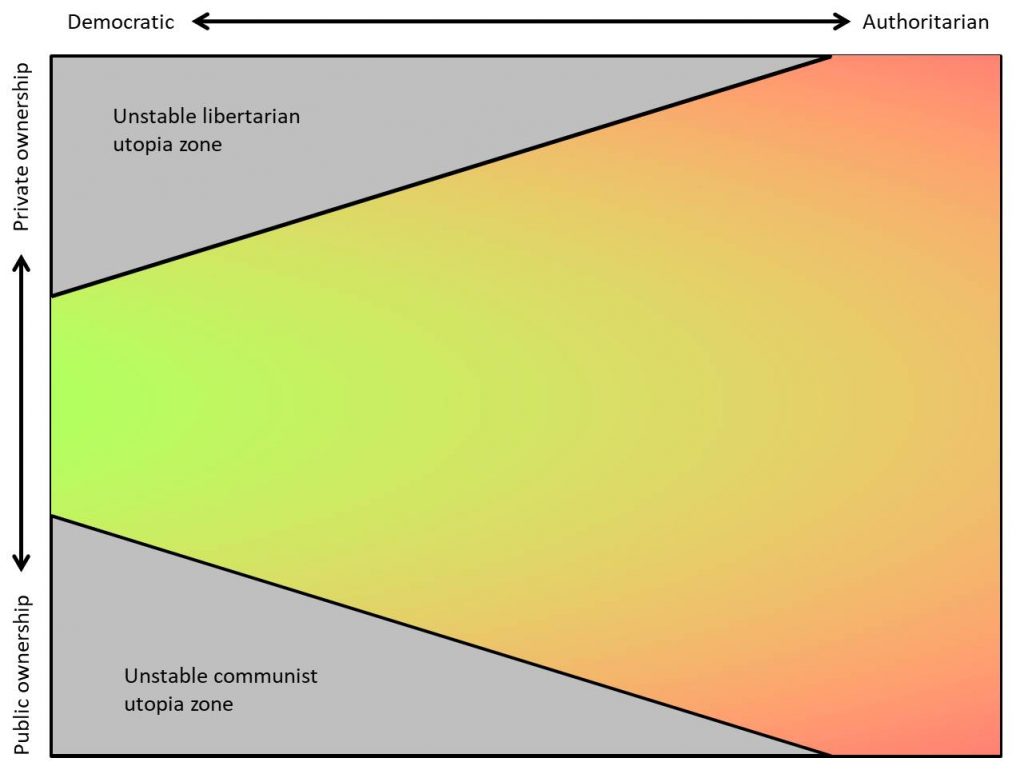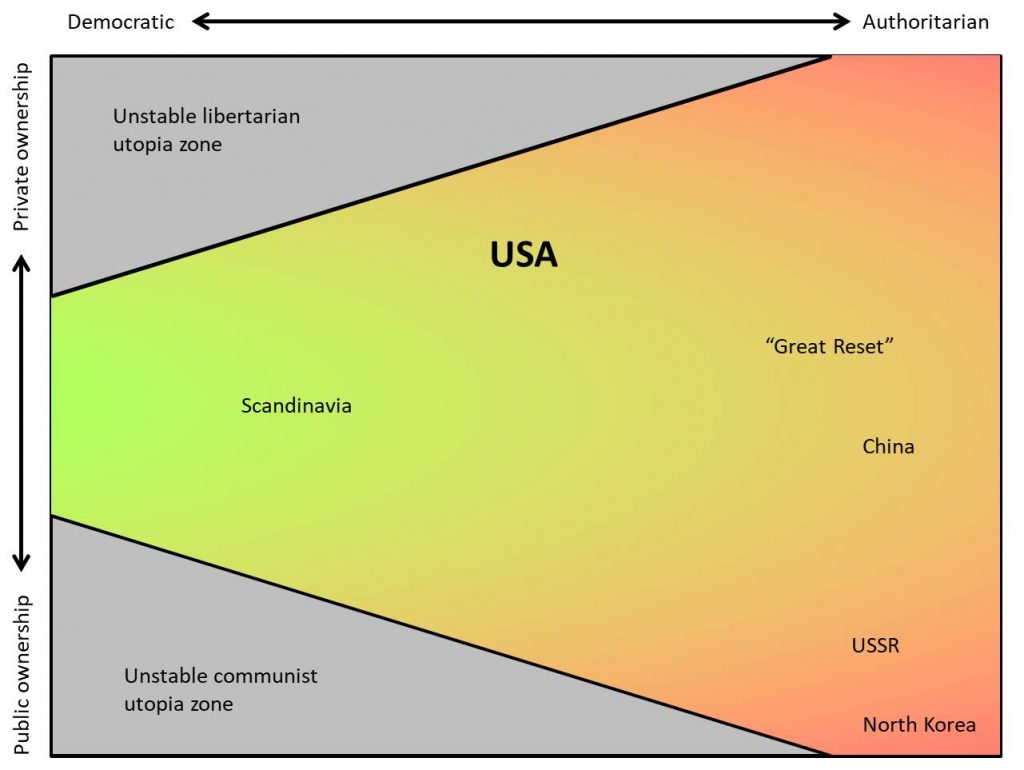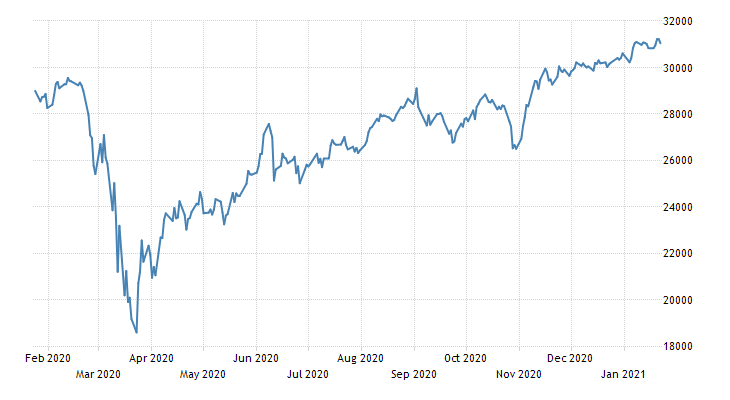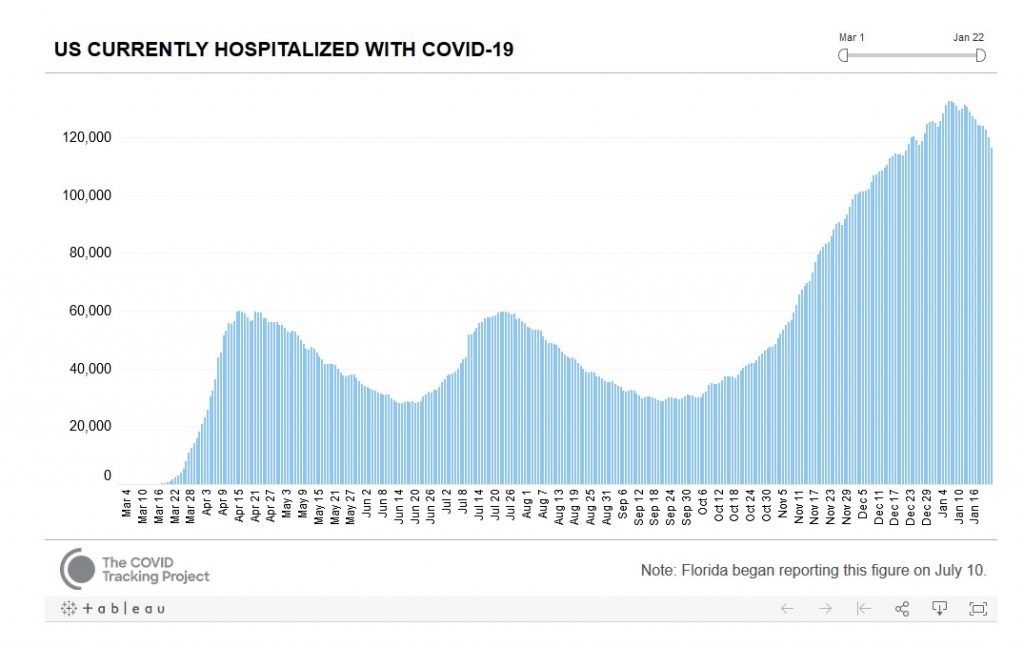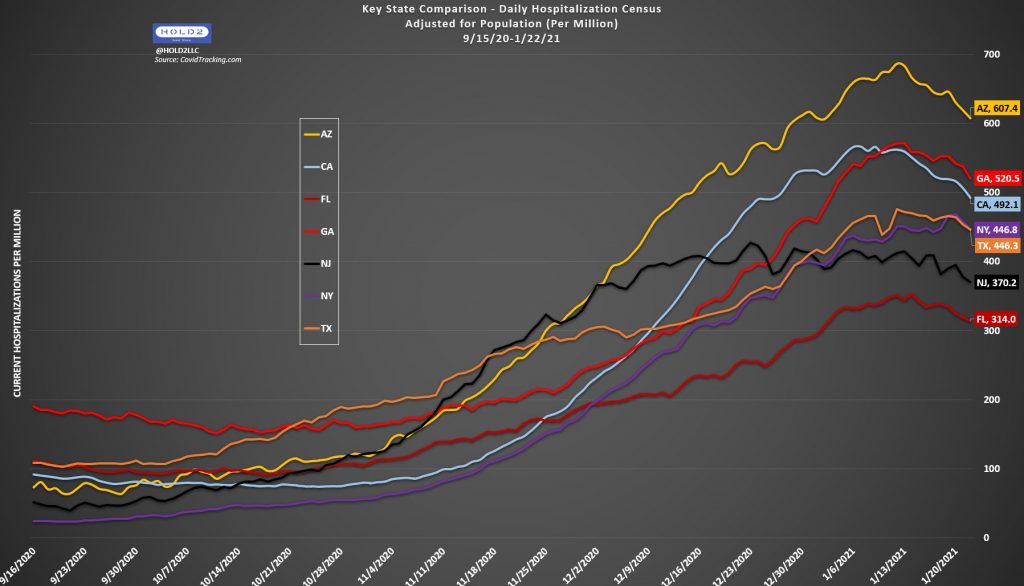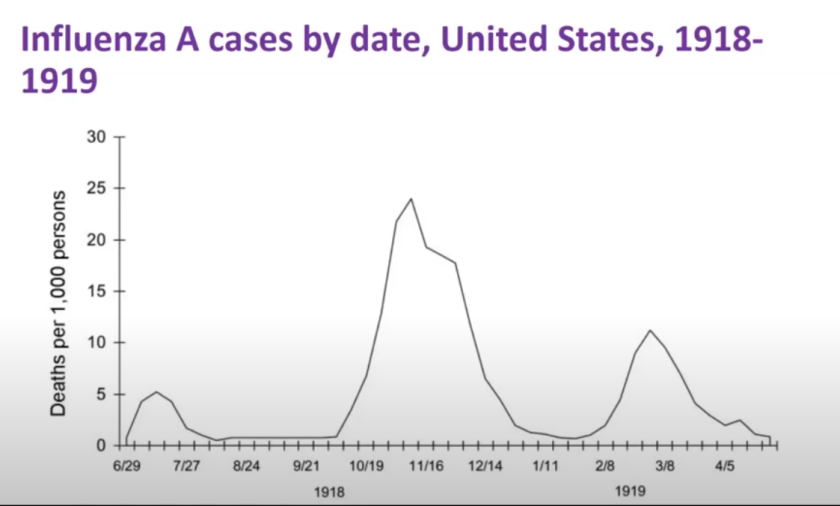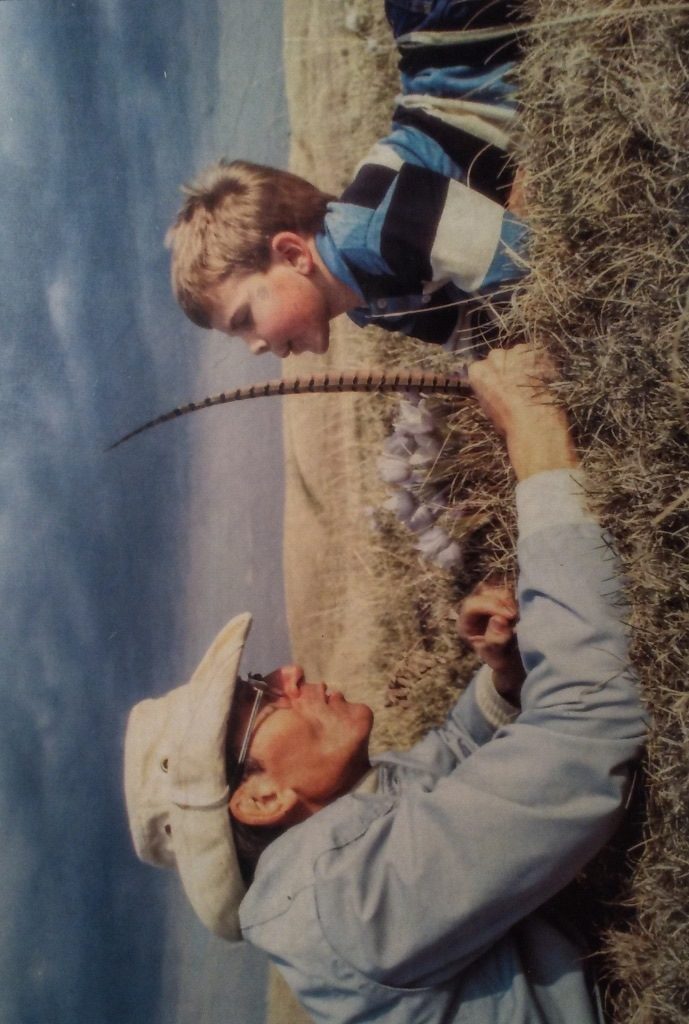It is time for me to once again talk about Covid-19. Before I begin, I want to acknowledge that it is a real and sometimes harrowing illness that can and does cause death and lasting damage. I would not wish it on anyone. When I question the official fear-narrative, it is not because I value the economy over human lives, or my personal freedom over others’ personal safety. Those are narratives projected onto me and others like me by the official narrative, in order to discredit us and subject us to judgment.
When I question the official fear-narrative, it is because I feel strongly that it does not stand up to careful scrutiny. The measures prescribed to stop the spread do not, on the whole, appear to be effective. This is immediately clear when comparing states and countries which have and have not adopted these measures for periods of time, and it is a topic that the official narrative carefully avoids. Furthermore, the metrics used to publicize mortality and risk seem designed to vastly inflate the danger. In surveys, nearly everyone exhibits a level of concern out of proportion to their personal risk.
I don’t listen to mainstream news, nor do I read their websites. Their fearmongering put me off from the beginning. Instead, I follow pandemic data directly: published summaries of deaths and hospitalizations from Covid-19 from states and the CDC. I follow independent analysts who examine trends in Covid deaths, all-cause deaths, and deaths likely attributable to lockdowns (loneliness, mental illness, suicide).
Personally, I mostly stopped worrying about Covid-19 after it passed through my godmother’s senior living complex without major incident. Out of 36 women mostly in their 80s, eleven tested positive, three had symptoms, and one was hospitalized and recovered. Perhaps they were lucky, but those odds seemed a lot closer to the flu than to the Black Death, and they also matched the statistics I was seeing. Even among vulnerable groups, Covid is still largely survivable and often not even severe.
That’s not to say that no precautions are warranted, but it is worth questioning at what level these precautions should be determined. Federal? State? Local? Maybe even the residents of a senior living complex should be allowed to decide for themselves how careful they want to be? During the last major pandemic, in 1918-1919 (which was several times worse than Covid-19 and also killed many children and young adults), people had many of the same debates regarding masks and business closures, but nearly all of them happened at the local level. Then-president Woodrow Wilson never even mentioned the pandemic, focused as he was on national defense during World War I.
It seems to me that one’s level of comfort with disease risk is a personal decision, and when that risk extends to others (in interpersonal interactions, or in terms of hospital capacity) it becomes a community decision. A city-level decision. A county-level decision. In the beginning, perhaps, when there is a chance of keeping a new disease out of a nation, then it should be a federal matter, but once it is firmly entrenched with no real hope of eradication then it becomes a personal and local matter. A useful federal government would seek to support its citizens in making personal choices to stay healthy – perhaps by deploying the military or national guard during outbreaks to fill essential service roles while offering paid vacation to vulnerable elders who normally work those jobs. An authoritarian federal government – like many around the world and increasingly our own – would instead enact a bunch of emergency laws and criminalize or stigmatize citizens who break them, while doing little of substance to support vulnerable or impoverished people in their own health choices.
The whole Covid saga is full of ideological truths that are either oversimplifications or are largely unsupported by real-world evidence. It’s worth asking exactly how that occurred – is it some sort of conspiracy or is it simply what happens when a new virus appears and spreads rapidly around the globe, with an apparently-high mortality rate (due to only testing the most seriously ill), and the panels of experts at the WHO and CDC need to make decisions with insufficient information? Perhaps these “experts” know that they over-reacted, but given the level of fear in the population and their need to keep their “expert” status they can’t admit that now? I don’t really need to know how it happened. I just want it to end.
It seems certain to me that if we had understood the full risk profile of Covid-19 from the beginning, our governments would never have enacted the suite of emergency measures begun last spring. In particular, we now know that governments that never imposed lockdowns on their citizens (e.g. Sweden) did not experience significantly more illness and death than countries with strict lockdowns (e.g. Spain, UK), and also that states that relaxed all pandemic measures early (e.g. Florida) did not experience a higher rate of illness or death in the ensuing wave than states that maintained and strengthened such measures (e.g. New York, California). We also know that no state or country, regardless of control measures, has yet experienced an overall Covid mortality rate greater than 3000 per million – or three out of every 1000 people, or one out of 350. Most places have been closer to half that number – one out of 700.
Take a minute, if you will, to set aside all of the events and news stories of the past year and a half. Imagine that you live in a small town in the pre-Internet age, population 350, with a tight-knit community and people of all ages. As the town is gathered for their annual summer celebration, an official government vehicle drives up and a man gets out, demanding an urgent audience with the entire town.
He faces the crowd of 350 people solemnly and begins to speak.
There is a new and deadly virus among you.
If you do not act, one among your number will likely be dead by the time a year has passed, in addition to the four or so people who will die of natural causes during that time. In all likelihood, the one who succumbs will be elderly and already seriously ill.
More than half of you will be infected. Some will not even know it. For some it will be like a mild cold. For many it will be rather unpleasant – like a bad flu that lasts 1-2 weeks. Around five of you will develop pneumonia and require medical treatment. Up to ten of you may experience longer-term symptoms after recovery – fatigue and a changed sense of smell are most common – and for one or two these symptoms may become chronic.
In order to prevent this death and disease, you must change your lives effective immediately. All school buildings will be closed for a year, and children will learn at home. All restaurants must transition to take-out only. All nonessential travel is strongly discouraged. All work that can be done remotely must be done from home, with offices closed. Thirty of you will be out of work effective tomorrow.
All public events must be cancelled. There will be no celebrations like this one, no sporting events, no dances, no big weddings, no funeral gatherings for a year. People from different households must remain six feet apart whenever possible, and masks must be worn over the mouth and nose in all indoor environments away from home. In-home gatherings must be limited to two households, wearing masks.
All close contact with people outside your immediate household, including hugs, kisses, sex, holding hands, dancing, and singing will be strongly discouraged or prohibited.
Hands should be washed as often as possible, or sanitized with alcohol. Avoid touching your mouth, nose, and eyes.
Visits to elder care facilities and hospitals will be strictly prohibited. All who are ill and dying in this time will have those experiences alone. This is unfortunate but necessary for your safety.
We assure you that if you take these actions you will be safe. We make this assurance despite evidence that communities that take all of these actions often experience comparable levels of illness and death to those who simply adhere to standard flu season hygiene recommendations.
After a year we will return with a vaccine. We assure you that this vaccine will be safe and effective. However, we will still discourage vaccinated people from resuming normal activities because some level of viral spread remains possible. Furthermore, this vaccine will utilize a new technology not previously deployed in vaccines, and will have been tested in a small group of volunteers for around six months before we are confident that it is safe enough to be given to everyone on the planet.
We trust that you find this approach reasonable, and we kindly request your cooperation, for your own safety. Good night.
At which point the crowd probably erupts in a mixture of laughter and anger, picks up their pitchforks and canes, and chases the poor fellow back to his car, with a stern message that any government which dares to impose such madness has no authority in this town.
The disconnect between the narrative and reality here is so extreme that I find it difficult to operate in both worlds. I understand that most of these actions were initiated at a time when we thought we might be dealing with a much more dangerous virus, and when we thought that a lockdown could drive cases to zero in a few weeks at which point we could more or less return to normal. But it turned out that we were dealing with a virus that killed around 1 in 200 people it infected, that it primarily killed those who were already approaching natural death, and furthermore that no amount of lockdown could drive cases to zero, and reopening didn’t seem to result in a sudden case spike either.
We realized all of these things, but we were still afraid. A few small studies showed that masks might be effective, so we made them mandatory as a condition of reopening businesses. When later studies and comparisons between masked/unmasked communities revealed little to no effect on a larger scale, we pretended that didn’t matter and continued to believe that our masks were keeping us safe.
The amount of ideological truth in play here is immense, to the point where I imagine the cognitive dissonance must soon begin to break under the strain. This is not unprovable ideological truth regarding the existence of God or when exactly during fetal development human life begins. This is ideological truth that is directly contradicted by observable physical reality. And yet somehow it persists.
Ideological truth: Covid-19 is a uniquely dangerous virus with a catastrophic death toll.
Physical truth: Covid-19 is substantially less deadly than the Spanish Flu of 1918-19, which was itself vastly less deadly than earlier smallpox and bubonic plague pandemics. It is true that in the vaccine and antibiotic era we are no longer willing to accept large death tolls from infectious disease. That said, the way that deaths have been reported (as raw numbers for a country of 330 million people), and the way that these numbers have been compared to wars and terrorist attacks, seems unnecessarily designed to inspire fear. A nationwide death count of 550,000 can be equally represented as 1 out of every 600 people, which better matches most people’s lived experience of knowing one or two people who have died of Covid-19 over the course of the pandemic. It is also true that only one out of nine people who died in the US in 2020 died of Covid-19 – a 13% increase in all-cause mortality.
Ideological truth: Covid-19 deaths would be much higher if we hadn’t locked down.
Physical truth: This is possibly true for places that used a temporary lockdown as part of an early and effective strategy to prevent the virus from becoming widespread, including New Zealand and Australia. It is almost certainly untrue for places that experienced a significant outbreak including New York, California, and the UK. The primary evidence for this is simply that places that did not lock down (e.g. Sweden) or that lifted restrictions entirely (e.g. Florida) did not end up with runaway case growth, overflowing hospitals, or even comparably higher death rates.
Ideological Truth: Masks prevent transmission.
Physical Truth: Small studies have shown that masks should be effective in preventing transmission, but epidemiological data have failed to reveal a consistent and dramatic difference in viral transmission and prevalence between locations with and without mask mandates. If masks do have a real-world effect, the magnitude of that effect is likely small, in the range of 20% or less. Which means that while they may not be useless, masks are hardly the magic shields that we believe them to be, nor are maskless people the walking biohazards that religious mask-wearers believe them to be.
Ideological Truth: There is no effective treatment or prevention for Covid-19.
Physical Truth: There are several promising options which have – for inexplicable and quite likely profit-oriented reasons – never been examined in sufficient depth to be endorsed by the WHO or FDA. A constantly-updated meta-analysis of small studies and clinical reports reveals, for example, that ivermectin treatment is correlated with a 76% reduction in Covid-19 mortality while hydroxychloroquine treatment, if applied early, is correlated with a 64% improvement in mortality. It has also been observed that people who have adequate to high vitamin D levels very seldom suffer from severe illness, and that treatment with vitamin D appears (based on small studies) to reduce mortality by around 69%. These are dramatic and repeatable effects that warrant the same level of investment being applied to designer drugs and vaccines, in order to establish whether and under what circumstances these treatments are effective. Instead, the response of the medical establishment has been to identify at least one study showing no effect which is then cited as definitive proof and a reason to avoid further investigation. In the case of hydroxychloroquine, there was even a study purportedly showing no effect published in a leading journal that was later retracted for using questionable data. Clinical trials are complete or ongoing for a wide variety of “repurposed” medicines (developed for other conditions and used to treat Covid-19), and several show preliminary mortality reductions in the 90% range – rivaling the reported effectiveness of vaccines.
Ideological Truth: Covid-19 vaccines are safe and effective.
Physical Truth: This could well turn out to be true (and I certainly hope it does), but it is being marketed with a level of confidence that borders on religious faith and is far from justified by the science. All three of the vaccines released in the US so far utilize novel technologies (mRNA and viral vectors) that have not been previously employed in widely-available shots. While clinical trials (and emerging real-world data) have found them to be effective at preventing severe disease and also reasonably well tolerated (albeit with substantially stronger side effects than most vaccines to the point that recipients are advised to take a day off of work), we do not yet know anything about their long-term safety or effectiveness because no human being has yet lived for more than a year since receiving the vaccine. A typical vaccine development timeline requires 5-10 years before receiving FDA approval. The Covid-19 vaccines are not FDA approved via the normal process but were instead released under an “emergency authorization.” To claim that these vaccines are as safe as any other vaccine is to claim that the standard 5-10 year testing and approval timeframe is totally unnecessary, which would be absurd. The only honest statement here is that the vaccines proved to be safe and effective in limited short-term clinical trials, but that the level of certainty remains low particularly with regard to long-term immunity or long-term adverse effects.
As we become mired in ideological truth, our societies become less able to respond to the crises of our time, even as an effective response becomes increasingly critical. We remain one small radar error or human miscalculation away from a global nuclear war that would threaten all lives, and yet we confidently scrap our nuclear treaties while cowering in fear and shutting down society over a virus that will be a barely-observable blip in the mortality tables of our history books. Fifty years from now, historical journalists will be much more likely to write about “The Covid-19 Panic of 2020” than “The Covid-19 Pandemic of 2020.”
Global capitalism continues to drive the planet and the working classes into the ground, and Covid-19 has given us another great distraction – a reason to hunker down and fear for our personal safety, a reason to ask the corporate experts for protection rather than to demand their resignation, a reason to shift our buying habits from small-town businesses to multinational online retailers. Whether produced intentionally or not, the fear narrative surrounding Covid-19 serves the interests of the corporate elite – in distraction from grassroots campaigns, in eliminating competition, in moving us away from democracy and toward an authoritarian state.
I have come to believe that if we are going to break free from this madness, we must reclaim control of the narrative. The corporate media – whether left or right – has effectively become propaganda that seeks to keep us afraid, keep us wishing for protection and willing to support emergency measures to achieve it, prevent us from looking within ourselves and becoming the people we wish to be, prevent us from mounting effective opposition to the disempowerment, wealth inequality, and ecological destruction wrought by global capitalism.
We must stop looking outward for truth. If we continue looking for truth out there somewhere, when we give up on NPR and CNN we become vulnerable to InfoWars and QAnon. I would not be at all surprised to learn that QAnon was an intentional dead-end cleverly devised to lure would-be truth seekers away from confrontation with real power.
We need to start trusting in ourselves, in our communities. Linking those communities together to rebuild democracy from the ground up. To put candidates on the ballot who are not beholden to corporate dollars, and who will put the interests of ordinary people first.
We need to stop seeing each other as biohazards, as potential threats. That, in and of itself, is immensely distancing and immensely destructive to the sort of community-building that is needed to enact change. This can’t just be a carefully managed reopening, along the lines of “fully vaccinated people may now meet in groups of up to 25 without masks.” At some point it must instead be a wholesale rejection of the fear mentality – “we are going to live our lives as we choose, thank you very much, rules and guidelines be damned.” We cannot enact the change we need while we are afraid – especially if we fear each other more than we fear the corporate authoritarians making the rules.
It always comes down to fear, it seems. Fear drives us apart, makes us open to suggestion. Trust brings us together, builds strong movements from the ground up. If we are to change this crazy world for the better, we must somehow let go of fear and rebuild trust. And we must do this in the face of manipulative systems that are doing their level best to keep us afraid. That’s a tall order, yet somehow I remain hopeful.
Into a new day I go. Into a new day we go. Together.


